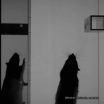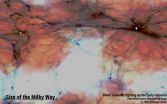(Press-News.org) CLEVELAND, Ohio (July 7, 2014)—Now women have yet one more incentive to lose weight as a new study has shown evidence that behavioral weight loss can help manage menopausal hot flashes.
The pilot study, which was published online last month in Menopause, the journal of The North American Menopause Society (NAMS), consisted of 40 overweight or obese white and African-American women with hot flashes, which are the most prevalent symptom of menopause. In fact, more than 70% of women report hot flashes during the menopausal transition, with many of these women reporting frequent or severe hot flashes. Since women with hot flashes are at greater risk for poor quality of life, sleep problems and a depressed mood, interest in identifying methods for managing hot flashes is growing. In addition, newer data indicate that hot flashes are typically persistent, lasting an average of nine years or more.
For purposes of the pilot clinical trial, hot flashes were assessed before and after intervention via physiologic monitoring, diary and questionnaire. The study confirmed a significant correlation between weight loss and hot flashes. Furthermore, the degree of weight loss correlated with the degree of reduction in hot flashes.
Although newer data has suggested a positive relationship between hot flashes and the percentage of fat in a woman's body, no studies, to date, had been specifically designed to test whether weight loss reduces hot flashes. The authors of this pilot study concluded that, while the results were encouraging in proving the benefits of weight reduction in the management of menopausal hot flashes, more than anything, the findings indicate the importance of conducting a larger study.
"This is encouraging news for women looking for relief for this bothersome midlife symptom," says NAMS Executive Director Margery Gass, MD. "Not only might behavior weight loss provide a safe, effective remedy for many women, but it also encourages a health-promoting behavior. Since many of the women in this pilot study indicated their primary motivator for losing weight was hot flash reduction, we know that this could be a strong incentive for women to engage in a healthier lifestyle which provides numerous other health benefits beyond hot flash management."
INFORMATION:
The article, "Behavioral weight loss for the management of menopausal hot flashes: a pilot study" will be published in the January 2015 print edition of Menopause. The work was supported by a grant from the National Institutes of Health through the National Institute on Aging.
Founded in 1989, The North American Menopause Society (NAMS) is North America's leading nonprofit organization dedicated to promoting the health and quality of life of all women during midlife and beyond through an understanding of menopause and healthy aging. Its multidisciplinary membership of 2,000 leaders in the field—including clinical and basic science experts from medicine, nursing, sociology, psychology, nutrition, anthropology, epidemiology, pharmacy, and education—makes NAMS uniquely qualified to serve as the definitive resource for health professionals and the public for accurate, unbiased information about menopause and healthy aging. To learn more about NAMS, visit http://www.menopause.org.
Slim down for the health of it and possibly reduce your hot flashes in the process
New study proves correlation between weight loss and hot flash reduction
2014-07-07
ELSE PRESS RELEASES FROM THIS DATE:
US scientists don't publish articles about potential role of innate variation in athletic performance
2014-07-07
ALLENDALE, Mich. — Compared to scientists working in other countries, U.S.-based scientists are underrepresented as authors of articles on the potential role of innate variation in athletic performance that are published in peer-reviewed science journals, according to Grand Valley State University researchers.
The findings are published in the online journal SpringerPlus.
The research, conducted by Michael P. Lombardo, professor of biology, and Shadie Emiah, a Grand Valley State graduate student, used information about the authors of 290 articles published in peer-reviewed ...
Of non-marijuana drug users in the ER, nearly all are problem drug users
2014-07-07
WASHINGTON —Of emergency patients who reported any drug other than marijuana as their primary drug of use, 90.7 percent met the criteria for problematic drug use. Among patients who reported cannabis (marijuana) as their primary drug, almost half (46.6 percent) met the criteria for having a drug problem, according to a study published online Thursday in Annals of Emergency Medicine ("Identifying Patients with Problematic Drug Use in the Emergency Department: Results of a Multi-Site Study.)
"Of patients who reported any drug use in the previous 30 days, nearly two-thirds ...
Sitting too much, not just lack of exercise, is detrimental to cardiovascular health
2014-07-07
Dallas – July 7, 2014 – Cardiologists at UT Southwestern Medical Center found that sedentary behaviors may lower cardiorespiratory fitness levels. New evidence suggests that two hours of sedentary behavior can be just as harmful as 20 minutes of exercise is beneficial.
The study, published in today's online edition of Mayo Clinic Proceedings, examined the association between fitness levels, daily exercise, and sedentary behavior, based on data from 2,223 participants in the National Health and Nutrition Examination Survey (NHANES).
Sedentary behavior involves low levels ...
Rats purposefully use their whiskers in different ways to help navigate in the dark
2014-07-07
VIDEO:
This is an example of the use of the whiskers for collision avoidance. Unexpected whisker contact
results in rapid deceleration of forward locomotion velocity and the animal orients to the...
Click here for more information.
The way rats use their whiskers is more similar to how humans use their hands and fingers than previously thought, new research from the University of Sheffield has found.
Rats deliberately change how they sense their environment using their ...
Small, but plentiful: How the faintest galaxies illuminated the early universe
2014-07-07
Light from tiny galaxies over 13 billion years ago played a larger role than previously thought in creating the conditions in the universe as we know it today, a new study has found. Ultraviolet (UV) light from stars in these faint dwarf galaxies helped strip interstellar hydrogen of electrons in a process called reionization.
The epoch of reionization began about 200 million years after the Big Bang and astrophysicists agree that it took about 800 million more for the entire universe to become reionized. It marked the last major phase transition of gas in the universe, ...
NASA satellites see Neoguri grow into a super typhoon
2014-07-07
From July 4 to July 7 Tropical Cyclone Neoguri strengthened from a tropical storm into a supertyphoon. NASA's Terra and Aqua satellites passed over the rapidly intensifying storm and provided forecasters with visible, infrared and microwave data on the powerful supertyphoon.
On July 4 at 0900 UTC (5 a.m. EDT) Neoguri had maximum sustained winds near 55 knots (63.2 mph/101.9 kph). It was located near 13.1 north and 141.4 east, about 207 nautical miles (238.2 miles/383.4 km) west of Andersen Air Force Base, Guam. It was moving to the northwest at 13 knots (14.9 mph/24.0 ...
The new atomic age: Building smaller, greener electronics
2014-07-07
(Edmonton) In the drive to get small, Robert Wolkow and his lab at the University of Alberta are taking giant steps forward.
The digital age has resulted in a succession of smaller, cleaner and less power-hungry technologies since the days the personal computer fit atop a desk, replacing mainframe models that once filled entire rooms. Desktop PCs have since given way to smaller and smaller laptops, smartphones and devices that most of us carry around in our pockets.
But as Wolkow points out, this technological shrinkage can only go so far when using traditional transistor-based ...
Study reveals protective role for specialized cells in intestinal and respiratory systems
2014-07-07
RIVERSIDE, Calif. – Ripping a page from the Star Trek script, specialized cells of the barrier that lines the inside of the intestines and airways of humans have invoked a biological version of Captain Kirk's famous command "shields up" as a first defense against invading microbes.
Research in the UCR School of Medicine laboratory of David Lo found that certain cells of the epithelium have a potentially important role in immune surveillance – creating an electrostatic repulsion field to microbial invasion.
The study is featured on the cover of the July issue of Infection ...
Expectant moms turn to 'Dr. Google' for pregnancy advice
2014-07-07
Pregnant women are using the Internet to seek answers to their medical questions more often than they would like, say Penn State researchers.
"We found that first-time moms were upset that their first prenatal visit did not occur until eight weeks into pregnancy," said Jennifer L. Kraschnewski, assistant professor of medicine and public health sciences, Penn State College of Medicine. "These women reported using Google and other search engines because they had a lot of questions at the beginning of pregnancy, before their first doctor's appointment."
Following the women's ...
Summer McJobs are good for kids, says UBC study
2014-07-07
A new UBC Sauder School of Business study shows that teenagers who work at summer or evening jobs gain a competitive advantage later in life. Developing early knowledge of the working world and how to manage in it, they are more likely to find good employment and earn more money in the future.
"With summer in full swing and kids sitting on the couch, parents are wondering whether to push them to find a job," says Sauder professor Marc-David L. Seidel, who co-authored the study. "Parents may think that their kids could do better than a job at the local fast food joint. ...
LAST 30 PRESS RELEASES:
Making lighter work of calculating fluid and heat flow
Normalizing blood sugar can halve heart attack risk
Lowering blood sugar cuts heart attack risk in people with prediabetes
Study links genetic variants to risk of blinding eye disease in premature infants
Non-opioid ‘pain sponge’ therapy halts cartilage degeneration and relieves chronic pain
AI can pick up cultural values by mimicking how kids learn
China’s ecological redlines offer fast track to 30 x 30 global conservation goal
Invisible indoor threats: emerging household contaminants and their growing risks to human health
Adding antibody treatment to chemo boosts outcomes for children with rare cancer
Germline pathogenic variants among women without a history of breast cancer
Tanning beds triple melanoma risk, potentially causing broad DNA damage
Unique bond identified as key to viral infection speed
Indoor tanning makes youthful skin much older on a genetic level
Mouse model sheds new light on the causes and potential solutions to human GI problems linked to muscular dystrophy
The Journal of Nuclear Medicine ahead-of-print tip sheet: December 12, 2025
Smarter tools for peering into the microscopic world
Applications open for funding to conduct research in the Kinsey Institute archives
Global measure underestimates the severity of food insecurity
Child survivors of critical illness are missing out on timely follow up care
Risk-based vs annual breast cancer screening / the WISDOM randomized clinical trial
University of Toronto launches Electric Vehicle Innovation Ontario to accelerate advanced EV technologies and build Canada’s innovation advantage
Early relapse predicts poor outcomes in aggressive blood cancer
American College of Lifestyle Medicine applauds two CMS models aligned with lifestyle medicine practice and reimbursement
Clinical trial finds cannabis use not a barrier to quitting nicotine vaping
Supplemental nutrition assistance program policies and food insecurity
Switching immune cells to “night mode” could limit damage after a heart attack, study suggests
URI-based Global RIghts Project report spotlights continued troubling trends in worldwide inhumane treatment
Neutrophils are less aggressive at night, explaining why nighttime heart attacks cause less damage than daytime events
Menopausal hormone therapy may not pose breast cancer risk for women with BRCA mutations
Mobile health tool may improve quality of life for adolescent and young adult breast cancer survivors
[Press-News.org] Slim down for the health of it and possibly reduce your hot flashes in the processNew study proves correlation between weight loss and hot flash reduction





